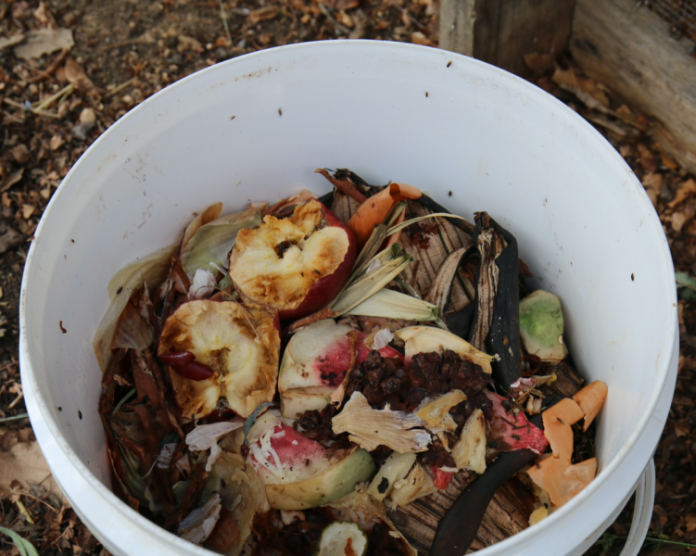Occasionally we get a distressed call at YIMBY informing us someone has fruit fly in their compost…Common names can be a bit misleading, and it turns out quite a few flying insects get the name ‘fruit fly’.
Although Queensland ‘fruit fly’ (Bactrocera tryoni) is a serious agricultural pest, the fly that people are seeing in their compost is much more likely to be from the genus Drosophila, and I prefer to use the common name ‘vinegar fly’ to save confusion.
Vinegar flies are recognisable as those small black flies that are often spotted circling a fruit bowl in summer with a very angular flight pattern. They will also frequent compost piles, but generally only if things are a little out of whack.
Problem fruit flies attack fresh growing fruit. Vinegar flies, on the other hand, are attracted to already rotting or damaged fruit, so are not considered a serious agricultural pest. They do bring with them acetobacter, the vinegar bacteria – hence their name – so are unwelcome in winemaking circles, as they spread spoilage bacteria.
Cooler weather keeps vinegar flies at bay, but as the seasons warm up, the flies can get active, and anything sweet, left slightly rotting at this time of year will likely attract a cluster of circling, interested vinegar flies.
Although vinegar flies are not a serious concern for most backyard composters, I prefer not to have them buzzing above my fruit bowl or circling around my compost, so I use them as a bit of an ‘indicator species’, letting me know I need to make some adjustments.
‘Tip and Run’ composters will be very familiar with vinegar flies, as dumping buckets of food scraps (particularly those rich in fruit or sweet veggies) in one uncovered lump on top of the compost pile, then bolting back to the house, just invites vinegar flies to move in.
Even under the closed lid of a Gedye-style bin, vinegar flies will find their way in and breed up happily, ready to emerge in a dark swarm next time the lid is removed.
So, how do we keep vinegar flies from ruling the air space above our composts? The answers are all ones you’ve heard from me before. Here are my top two.
1. Balance and layer up our food scraps (in thin layers) with lots of carbon-rich ingredients, like straw, autumn leaves, woody garden prunings and aged wood chips. This will immediately reduce the odours that attract vinegar flies (and significantly improve our compost too).
2. Always finish a composting session with a good layer (10 – 20 cm) of carbon-rich covering (straw is great, but other carbon sources will do). This capping will protect against odours that are the main insect attractors and also creates a physical barrier from flying insects and the richer food sources deeper in the compost pile.
Whether we are composting in a bin or a bay, try these approaches and watch the vinegar fly numbers plummet.
– Joel Meadows works with *Yes In My Back Yard, (YIMBY), a community-scale composting initiative in Castlemaine and surrounds. Send questions or comments to hello@yimbycompost.com, or to book in for a compost workshop!








